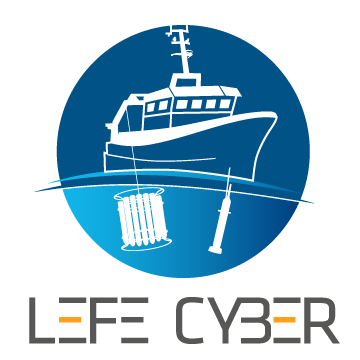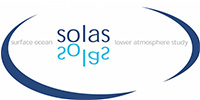Cruises LEFE CYBER
APERO
Assesing marine biogenic matter Production, Export and Remineralization: from the surface to the dark Ocean
The atmospheric concentration of carbon dioxide (CO2) is increasing at an unprecedented rate due to anthropogenic activity. The oceans provide an ecosystem service by capturing atmospheric CO2 and thereby buffering its rise. This carbon capture by the oceans, mainly driven by biogeochemical (BGC) processes, is still poorly understood. At the ocean surface (0;200m), photosynthetic organisms convert
CO2 to Organic Carbon (OC). A fraction of this OC sinks to the dark ocean (>200m) where it is isolated from the atmosphere for decades to thousands of years. The sequestration time is a direct function of the OC remineralization’s depth. Surprisingly, very little is known about this set of processes, known as the Biological Carbon Pump (BCP). Predicting how our climate will evolve requires a better mechanistic understanding of the BCP.
This is because current uncertainties associated to rates of OC remineralization in the dark ocean result in large variations in atmospheric CO2 concentrations (up to
200 ppm). Multiple attempts to reduce these uncertainties using meta analyses and alternate equations have failed. We currently cannot balance the amount of photosynthetically produced OC sinking out of the surface ocean with the biological carbon demand (mainly prokaryote and zooplankton carbon demand) deeper down in the water column (dark ocean). Here, we hypothesize that our inability to balance the BCP budget results from a lack of understanding of processes occurring at various depths within the water column as well as missing some such as dark inorganic
carbon fixation on particles and OC vertical transport by macrozooplankton and micronekton. Recent modeling and technological breakthroughs provide an unprecedented opportunity to solve this problem.
APERO proposes to take a new step towards the mechanistic understanding of the Biological Carbon Pump, from organic carbon production at the ocean surface, to its export and remineralization in the water column, focusing on the dark ocean.
Through a comprehensive, multiscale (from sub meso to regional) multidisciplinary program, using the most recent methodological developments in autonomous sensors and platforms, in ’omics’ techniques, combining biological processes studies and developing innovative modeling approaches, APERO will test three main hypotheses, which structure the in situ observing strategy:
(H1) Fine scale ocean dynamics constrain the export flux and the fate of carbon throughout the water column.
(H2) The export flux of organic carbon sinking out of the euphotic zone is controlled by regimes of surface production and pelagic plankton network ecosystem.
(H3) The organic carbon flux attenuation is driven by ecological and metabolic processes in the mesopelagic zone.
| Name | Lab. | Status | Topics |
|---|---|---|---|
| Memery L. | LEMAR | ||
| Tamburini C. | MIO | ||
| Guidi L. | LOV |








